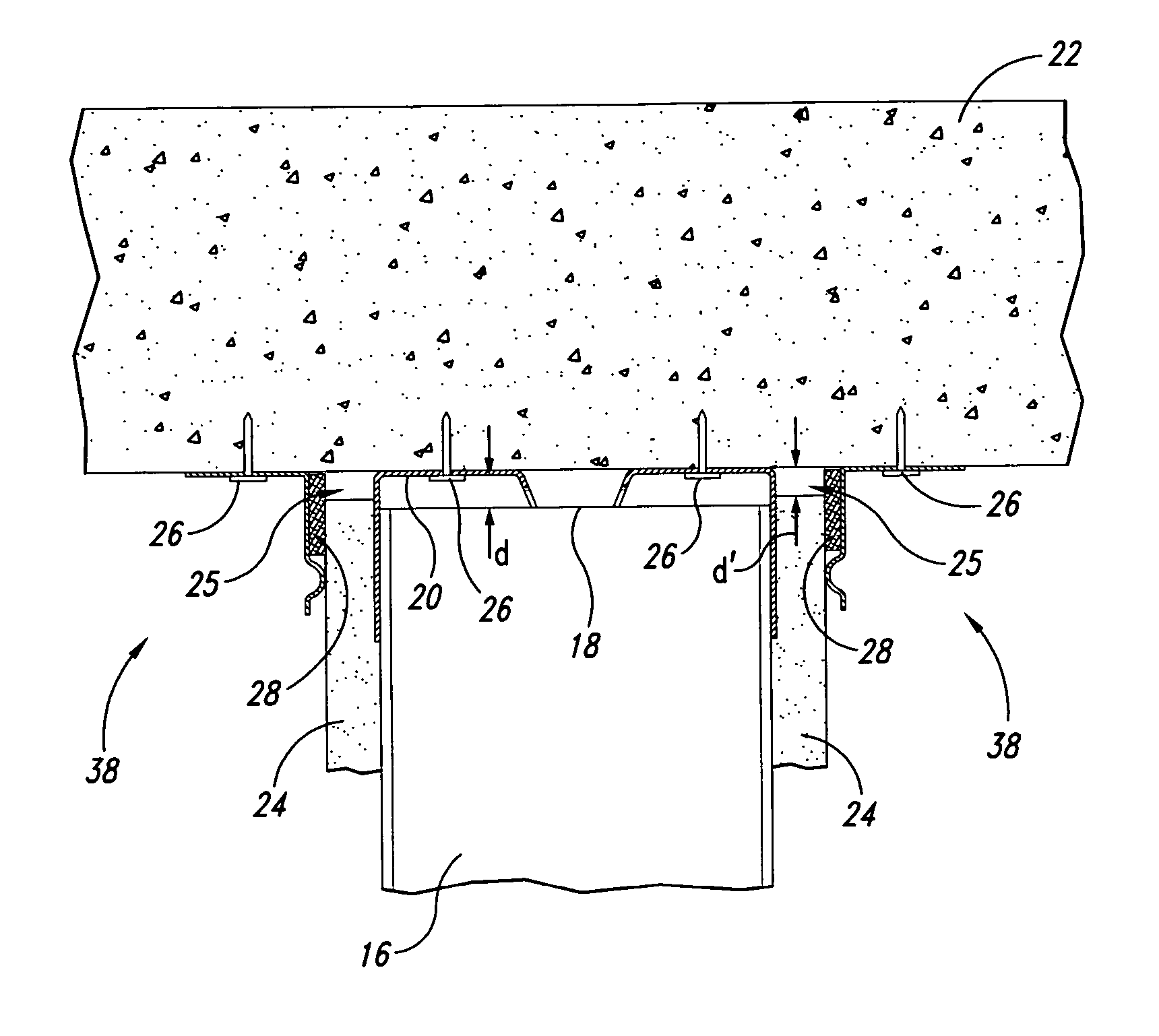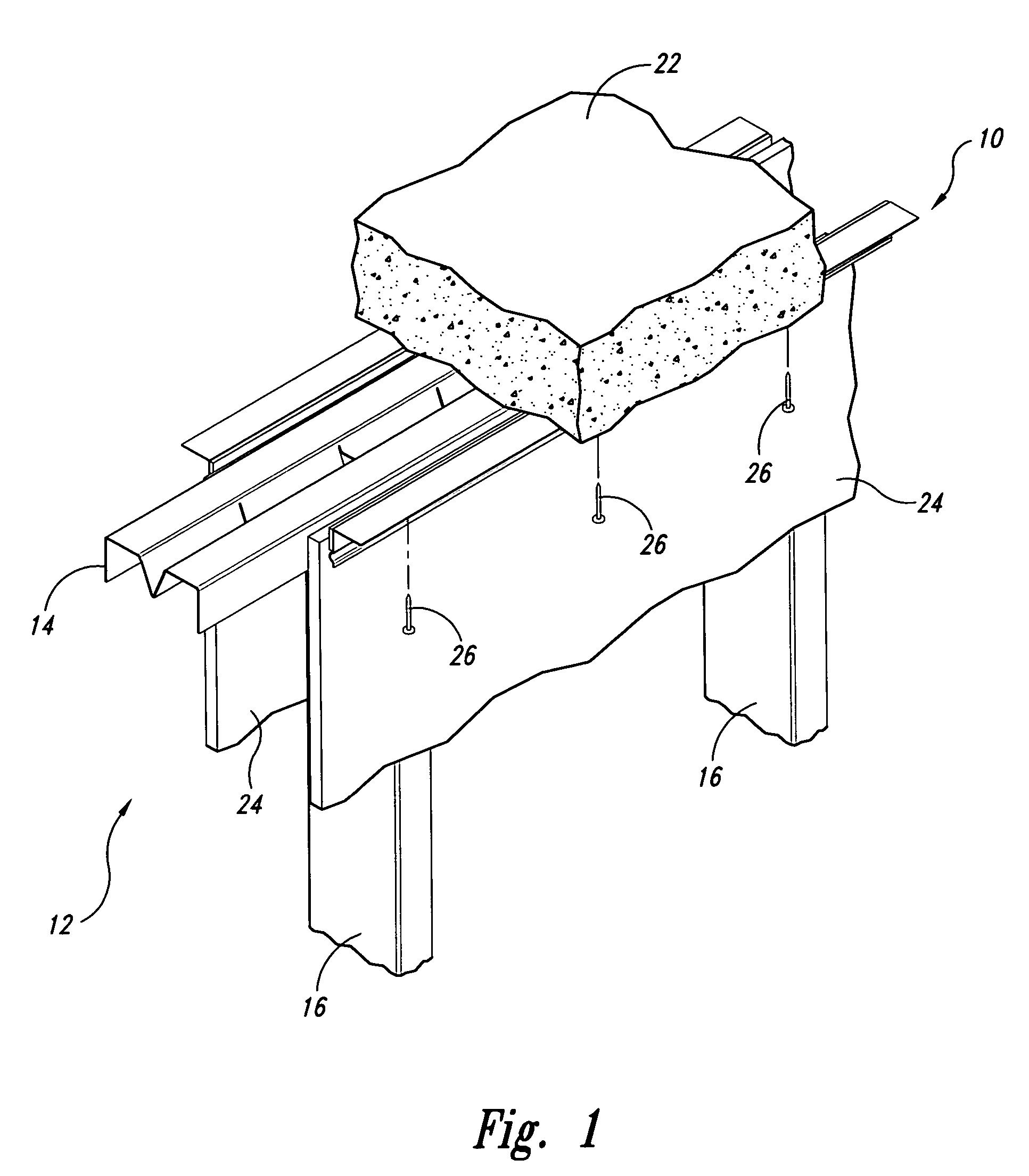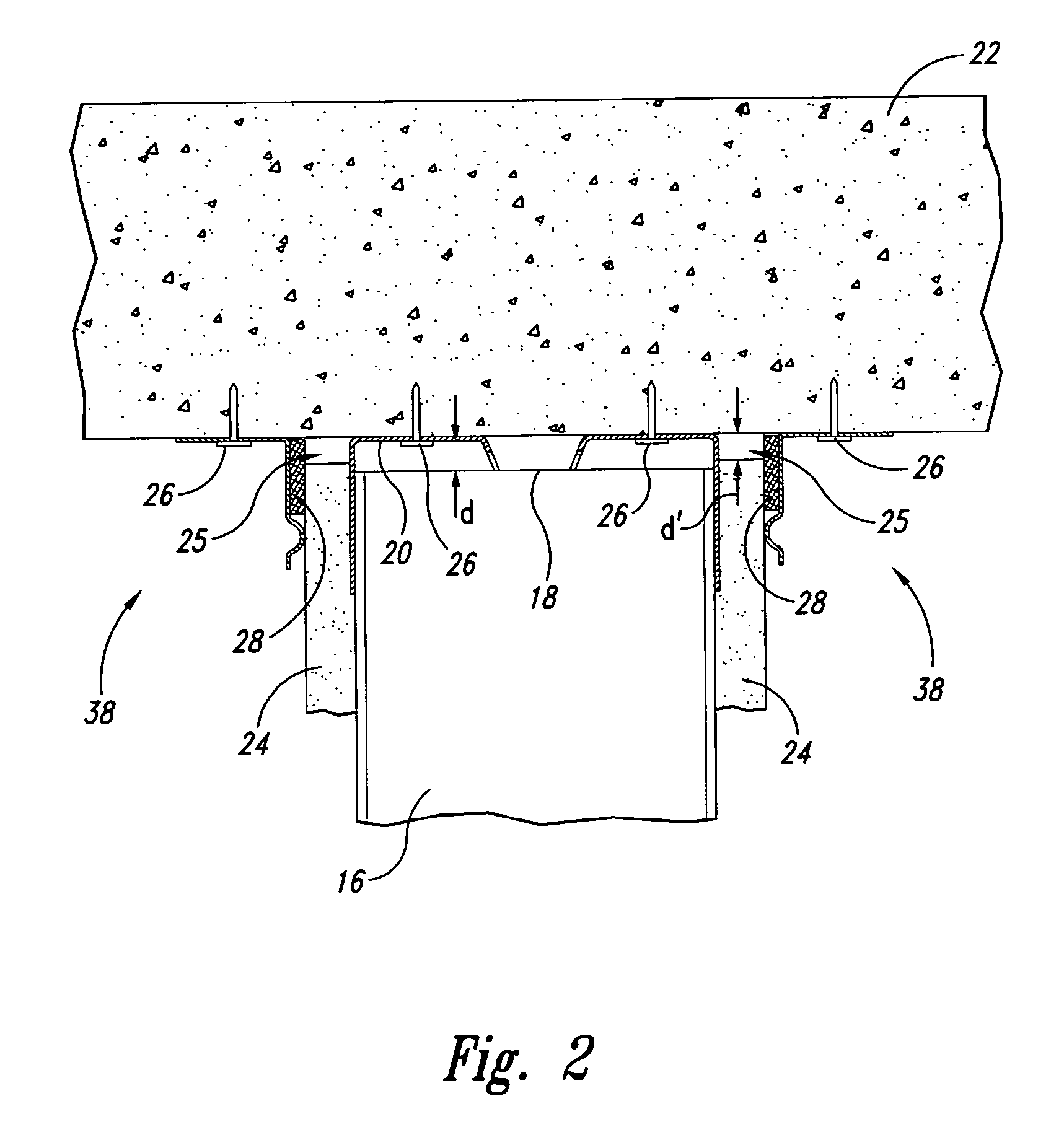Head-of-wall fireblocks and related wall assemblies
a technology of head-of-wall joints and fireblocks, which is applied in the direction of fireproofing, heat-proofing, walls, etc., can solve the problems of low efficiency, low cost, and high labor intensity of head-of-wall joints, and achieves the effects of reducing or preventing, reducing the number of products and methods available, and improving the safety of workers
- Summary
- Abstract
- Description
- Claims
- Application Information
AI Technical Summary
Benefits of technology
Problems solved by technology
Method used
Image
Examples
example
[0029]From Jul. 20 to Jul. 26, 2005, a series of head-of-wall joint firestop system tests were conducted to evaluate the effectiveness of the fireblock device generally shown in FIGS. 1-5 in combination with a dynamic head-of-wall assembly also generally shown in FIGS. 1-3, and 5. The test were conducted in accordance with UL 2079, “Tests for Fire Resistance of Building Joint Systems” (also known as the 2-hour fire and hose stream test). In the tests, the joint length was approximately 1 meter and the joint movement or deflection was approximately 1 inch. The dynamic head-of-wall assembly was cycled or deflected 500 times at about 10 cycles per minute and was then fire tested at maximum extension. The fireblock device in combination with a dynamic head-of-wall assembly readily passed the 2-hour fire and hose stream test, both when the ceiling was a concrete slab as shown in FIGS. 1-3 and when the ceiling was a fluted roof deck as shown in FIG. 5.
PUM
 Login to View More
Login to View More Abstract
Description
Claims
Application Information
 Login to View More
Login to View More - R&D
- Intellectual Property
- Life Sciences
- Materials
- Tech Scout
- Unparalleled Data Quality
- Higher Quality Content
- 60% Fewer Hallucinations
Browse by: Latest US Patents, China's latest patents, Technical Efficacy Thesaurus, Application Domain, Technology Topic, Popular Technical Reports.
© 2025 PatSnap. All rights reserved.Legal|Privacy policy|Modern Slavery Act Transparency Statement|Sitemap|About US| Contact US: help@patsnap.com



